| First African American graduate | Dunlop photo collection | Alumnae get tough |
 |
||
| Home Forethought Campus Buzz Feature Stories Re:Search The Score Alum News Yesteryear | ||
Although the school that would become The University of Texas at Arlington
dates to 1895, no president presided over the campus for the first 53 years.
In the early days, the top campus executives were called trustees or
superintendents. When the school became part of the Texas A&M University
System in 1917, the chief administrative officer received the title of dean, not
president.
Texas A&M eventually reorganized its system, naming
presidents at branch campuses who reported to a chancellor. Thus, in 1948, North
Texas Agricultural College (now UTA) gained its first president, E.H. Hereford,
who served until his death in 1958. The E.H. Hereford University Center is named
in his honor and houses a bronze bust that is said to bring good luck on tests
to students who rub it.
Presidents of The University of Texas at Arlington
 |
Jack R. Woolf (1958-68) - Dr. Woolf served during a time of change in which the college achieved four-year status, integrated peacefully and moved from A&M to The University of Texas System. It was during his presidency that the school became The University of Texas at Arlington. To accommodate the exploding enrollment, Dr. Woolf added faculty as fast as the budget would allow. Despite low salaries in the early 1960s, they climbed to fourth highest in the state before he stepped down in 1968. He now holds the title of president emeritus. |
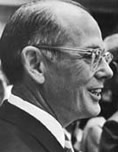 |
Frank Harrison (1968-72) - UTA added its first Ph.D. program and conferred its first doctoral degrees during Dr. Harrison's tenure. Several new buildings went up, including Davis, University, Carlisle, Hammond and Trimble halls, plus the Business-Life Science Building formally opened. The Fine Arts Building was begun before Dr. Harrison left in 1972 to become president of The University of Texas Health Science Center at San Antonio. |
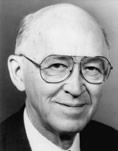 |
Wendell H. Nedderman (1972-92) - Dr. Nedderman led the University during a 20-year period of tremendous growth. Enrollment increased from 14,000 to more than 25,000, including a four-fold increase in graduate students. His presidency saw 20 buildings or major additions constructed and the addition of 20 bachelor's degrees, 24 master's degrees and 17 doctoral programs. He also presided over significant growth in the University's research endeavors. President Emeritus Nedderman still serves on the faculty in the College of Engineering. |
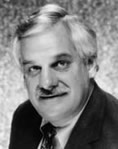 |
Ryan C. Amacher (1992-95) - Dr. Amacher focused on external relations and development in an effort to increase financial and political support for the University and boost its image. He began working toward more students living on campus by spearheading construction of the Centennial Court Apartments. He expanded recruiting efforts that resulted in an increase in minority enrollment. Dr. Amacher currently serves as a professor of economics. |
 |
Robert E. Witt (1995-2003) - Dr. Witt became interim president in 1995 and was named permanent president a year later. During his tenure, enrollment climbed once again after taking a dip in the early 1990s. He also led efforts to build Arlington Hall, the University's first new residence hall in 35 years. His presidency experienced continued growth, including additional degrees and buildings and a significant increase in the number of students living on campus. Dr. Witt is now president of the University of Alabama. |
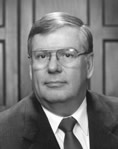 |
Charles A. Sorber (2003-04) - Dr. Sorber assumed the interim presidency in February 2003. During his term, enrollment continued to soar, nearly reaching an all-time high in fall 2003. Although on the job only one year, he oversaw two major policy changes: a tuition increase and tougher admission standards. Dr. Sorber has returned to his position as special engineering adviser for The University of Texas System. |
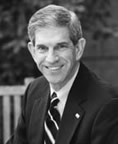 |
James D. Spaniolo (2004-present) - President Spaniolo came to UTA from Michigan State University where he was dean of the College of Communication Arts and Sciences from 1996-2003. He has experience as a lawyer, newspaper executive, journalist and foundation vice president. Since arriving on campus, he has begun building an administrative team and reaching out to stakeholders to map a course for the University's future. Boosting research and private support are among his top priorities. |
| Archives
| Alumni Association |
Giving to UTA | UTA
Home Copyright © 2004 UTA Magazine. All rights reserved. |